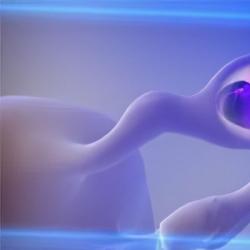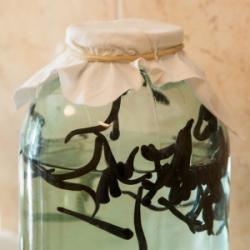Reuse of leeches. Hirudotherapy at home: how to put leeches. Treatment with medicinal leeches cures any disease
Hirudotherapy is a method of treatment in which medical leeches are used for therapy instead of the usual medications. Hiruda is the scientific name for a medicinal medicinal leech that has been used for clinical bloodletting for hundreds of years. The healing effect of therapy is scientifically confirmed and proven.
For centuries of existence, leech treatment has generated many myths, in order to imagine the real possibilities of this therapy, it is necessary to debunk some far-fetched facts.
Treatment with medicinal leeches cures any disease
This is a myth. There are many health problems that can not be cured by hirudotherapy alone: heart attack, apoplexy and acute inflammatory processes. Therapy with leeches does not make sense if the body suffers from a lack of any trace elements in the blood, as well as with some pathologies of the internal organs. In addition, treatment with leeches is even contraindicated in certain diseases: allergies, fever, acute infectious diseases, toxicosis, bleeding disorders and sepsis. These health pathologies must be treated with the help of medications, and hirudotherapy can be applied after the acute condition has been removed, during the period of remission.
Frequent use of leeches contributes to death from blood loss
It is impossible to talk about a certain number of leeches that must be used during the session. It is known that in pre-revolutionary times, the use of up to fifty of these animals per procedure was successfully practiced, however, the leeches were quickly removed after suction, excluding complete saturation with blood.
In the treatment of endocrine system disorders during hirudotherapy sessions, up to 40 of these animals are installed in 1 session. In this case, it is recommended to carry out 1-2 such procedures per month. In this case, a positive result will appear after 4-5 months.
With benign prostatic hyperplasia, diseases of the mammary glands in women, diabetes mellitus, gangrene or painful fullness, about 100 of these animals are installed in one procedure. But when they just stick and they are immediately removed. Before and after the procedures in these cases, patients are shown to drink plenty of fluids (up to 7 liters per day).
Many experts have their own points of view about the required number of leeches for a session. But it must be remembered that hirudotherapy treatment is carried out only in highly specialized honey. institutions.
There is a hirudotherapy technique that cures several mental disorders, including epilepsy. During the procedure, 30-70 leeches are placed on the head of a patient suffering from epileptic seizures. Therefore, it is necessary to shave the patient's head in advance. Animals are removed almost immediately after biting through the skin. The leech introduces useful substances into the patient's blood, thanks to which the necessary amount of microelements in the body is restored.
Leeches are not put on bioenergy zones
Initially, in Tibetan medicine, leeches were installed precisely in these zones. This technology has recently been used by our specialists. In special honey. institutions for the purpose of prevention place leeches on the main energy zones: the perineum, pubis, navel, solar plexus and in the region of the nose. In places where the concentration of inflammatory processes is especially high, there is a large amount of dark blood. In patients prone to hypertension, animals are located from the upper zones going down to the lower ones, in patients with hypotension - from the lower points to the upper ones.
It is forbidden to reuse leeches
In Tibet, there was an opinion that a leech sucks out negative energy from a person, so it can no longer be used again. From a medical point of view, it is forbidden to use the same leech for the treatment of different people.
It has been established that already used leeches can be useful again after 3-4 months. For ethical reasons, it is impossible to destroy living beings that have helped a sick person, therefore, during subsequent performances, they are not allowed to fully satiate.
Leeches can be "milked"
In various literary publications, there are recommendations on how, after the second procedure, it is possible to speed up the process of working capacity and use of a leech by means of its “milking”: in order for the leech to start spitting out blood, it is necessary to lower it in a saucer with salt water, then lower it head down and carefully movements to make touches from top to bottom. After the manipulations, after 1.5-2 months, the little doctor will be ready for work. But this method has not been scientifically proven.
Medical leeches can be installed on any part of the body
Microbiologists say that leeches stick only to the necessary reflexogenic points, on which needles are placed during acupuncture. But experienced doctors say that these animals can attach themselves to absolutely any place on the patient's body, the main thing they need is for the body area to be warm and without hairline.
When using leeches at home, it is strictly forbidden to allow these animals to stick to any place they choose. In specialized clinics, leeches are installed using a glass vial, as a rule, the area of \u200b\u200bits suction and is limited to the radius of this object. Areas of the body on which it is strictly forbidden to place leeches: eyes, vagina, genitals of a man, tongue, gums, places of the main blood vessels, even a small damage to which is life-threatening, arteries and veins.
When using leeches, you can get infections
Experts in this field say - this is impossible. But still, many people do not cease to doubt it. You can understand these people, because during the procedure there is a direct contact of the leech with human blood. Some patients in confirmation of infection show boils formed 2-3 days after the procedure, but it is worth noting that boils in these cases formed in places on the skin where the leech did not stick.
And, nevertheless, infection is completely excluded, however, boils still appear. This is due to the fact that highly effective biological substances contained in the saliva of small doctors reveal the foci of latent infection. In such cases, experts consider it necessary to install leeches on the boil itself. It has been scientifically proven that in the body of these creatures there is a bacterium that, in addition to fighting the infection inside itself, also heals a sick patient.
Leeches cure cancer
There is an assumption that a fairly common disease - trichomoniasis, is capable of generating cancerous tissues in the body. Due to a long and untreated course, microbes begin to accumulate in plaques, then form into capsules. Further, the capsules are formed in the weakest place of the human body, and contribute to the formation of cancer cells. And the healing properties of leech saliva cleanse the blood of harmful bacteria, thereby preventing the formation of plaques and, accordingly, cancerous tissues.
Thus, the risk of oncological diseases is reduced. Some clinics practice the use of these little doctors to treat an existing cancer, while in other specialized centers, on the contrary, they believe that cancer is a contraindication for hirudotherapy. But all experts at the same time do not recommend using leeches on their own.
At home, it does not matter where to start therapy
Some people, on the contrary, are of the opinion that these animals cannot harm and that wherever you put them, they will still be useful. Therefore, treatment and prevention can be performed from any place on the body.
But still, doctors are against establishing leeches on their own in the area of the liver. This is due to the fact that biliary tract disease is a disease that is quite common even among most healthy people.
This disease manifests itself in a slight grayish or yellowish tint of the protein of the eyeball. Stagnant processes in the liver provoke the development of cardiovascular diseases, varicose veins, urological and gynecological problems. Therefore, it is recommended to take preventive measures to prevent this problem. Prevention can be carried out independently.
It is unpleasant to be treated with leeches because of their appearance.
Undoubtedly, the appearance of these animals does not cause admiration. You should not convince yourself that this creature will crawl over the body in search of a better place for suction. But this will not happen, because doctors install leeches only in certain places. After the procedure, the animals are sent for disposal. In view of this, it is better to focus on the positive outcome of leech therapy.
Hirudotherapy is a painful procedure
A leech bite is similar to a mosquito bite, so the procedure is quite tolerable and the patient does not feel any discomfort after it. The only discomfort after the procedure is small wounds that can bleed for several hours.
Hirudotherapy is an expensive treatment
In fact, the prices for hirudotherapy are not that high. The cost of the procedure will depend on the problem that needs to be treated. As a rule, experts prescribe several sessions using 2-3 dozen leeches. Some honey. institutions provide the opportunity to purchase leeches. But it is important to understand that therapy with leeches is not a cure for all diseases, so this method of treatment is best used as a preventive measure or used at the stage of recovery after an illness.
Any leech is suitable for treatment

It is a myth. For the treatment of people, a certain type of leeches, which are called "medical leeches", are specially bred. They are grown in special biological laboratories under sterile conditions. But even thanks to the favorable conditions created specifically for these animals, finding a suitable type of leech is not entirely easy. The ideal little doctor: sleek, with the most flattened body and pointed head. In addition, the body of the animal should have a greenish color, orange stripes, and black dots on the back. Other varieties of leeches are not suitable for treatment.
Leeches are firmly attached and drink all the blood
It is a myth. It takes 45-60 minutes for a leech to fully saturate. During this amount of time, she absorbs 5-15 mg of blood. The volume of absorbed blood depends on several factors: the time of year, the age of the patient and his smell, as well as the smell in the room. After saturation, the animal itself disconnects. If this does not happen, then the doctor will help. To do this, the specialist brings a swab dipped in alcohol to the anterior suction cup of the leech. After removing the animals, bleeding wounds remain on the body, from which blood can ooze for quite a long time up to a day. During this period, a volume of blood will flow out of the wound equal to the amount of blood that the leech sucked. During the session, the patient loses no more than 50-210 mg of blood.
It is worth noting that the leech takes stagnant blood, which contains a large amount of harmful decay substances. Removal of harmful blood contributes to the normalization of blood circulation in diseased tissues and organs. Today, hirudotherapy is the only bloodletting method of its kind that works at the capillary level.
by Notes of the Wild MistressThe method of hirudotherapy (treatment with leeches) is very ancient; Hippocrates used it in his practice. However, in our time, many patients turn to treatment with leeches, and hirudotherapy rooms appear.
Let's find out for which diseases their use is indicated and what is the principle of operation of this method?
What diseases can be effectively treated with leeches?
Treatment with leeches gives a good result in those diseases in which blood circulation is disturbed, where blood stagnation, vascular sclerosis is observed. Leeches have a good effect on the state of the vessels of the head and small pelvis. They are often used for hypertension, thrombophlebitis, constipation, overweight, heart failure and many, many other diseases. Properly placed leeches can improve vision.

They act on connective tissues. And if, say, as a result of a fracture, you have a rupture of the nerve fiber and blood vessels, the leech will help them splice. Moreover, if a person’s ear is suddenly torn off, then the only remedy that can help splice it in hot pursuit is a leech. It also dissolves fresh scar tissue to complete invisibility. Unless, of course, the scar is not old yet, not hardened. American specialists use this ability of leeches in cosmetic surgery, furnishing them with a freshly formed suture.
Leeches can be placed and placed on any area of the body. With pathology, and in the nose, and in the mouth, and in the corners of the eyes (but not in the eye itself, of course), in the perineum and even in the vagina. This, of course, is done by experts. Before the procedure, the patient undergoes a medical examination to take into account exactly his characteristics, and special training. In particular, with hypertension, a special massage of the abdomen is done. After all, in a person, all internal organs are interconnected. Of course, if a person has a sore shoulder or knee, that is, some peripheral organ, you can put leeches without much preparation.
What is the therapeutic effect of hirudotherapy?

The leech is known to suck blood. But that is not its main therapeutic effect. Try to arrange a simple bloodletting, you will not achieve a comparable effect. The whole point is in that substance - hirudin, that the leech spits up into the wound. Only 50 components of active substances come from leeches. Therein lies its main value. With its enzymes, first of all, it anesthetizes the wound, increases the fluidity of the blood. If you cut a pumped leech and anoint the sore spot with its blood, the healing effect is obvious. This blood is well absorbed, and along with it, leech enzymes enter the body. Some medicinal properties of leeches are well known and their mechanism has been studied. And some are known, but little studied. In some cases, staging leeches can lead to unexpected reactions.
Sometimes setting leeches in large numbers (15-20 pieces) can cause the ejection of fillings from the teeth. Not necessarily, but maybe. Sometimes there is an allergy, swelling. Such a picture is possible. Today, let's say, a woman was given leeches, and the next day she went to dye her hair. The paint does not lay down, the hair is piebald, like Kisa Vorobyaninov's. And so far there is no reasonable explanation for this. In a word, it is necessary to use the treatment with leeches with great care and under the supervision of a specialist, and one must be aware that leeches can help, or they can harm.
Hirudotherapy indications and contraindications
Those who decide to use leeches on their own, first of all, you should definitely familiarize yourself with one or two popular brochures about hirudotherapy. They are inexpensive and available. And be sure to consult your doctor.

Of course, negative reactions are not so frequent. But we must not forget about them. Particular care must be taken with diabetes. After all, a leech cuts through the skin, just like a three-sided bayonet. And this wound in a diabetic can be very difficult to heal. Here it would be nice to rely on the discretion of the doctor - how hirudotherapy is possible and how impossible.
When a hypertensive person puts leeches, the pressure in 90% of patients decreases. The person rejoices and stops taking the prescribed drugs. And in a day or two, the pressure, according to the law of the pendulum, shoots up, higher than before. Therefore, you should not cancel the medication for hypertension in any case. You can only reduce the dosage by a quarter or half if the pressure has dropped too much.
We must not forget that something cannot be completely cured with leeches. They are good in complex therapy, they alleviate, but do not cure. A person should approach the use of hirudotherapy on his own creatively, carefully listening to the advice of doctors, and to smart books, and to his own body.
Hirudotherapy at home
The setting of a leech should begin with an enema. It is necessary to wash the intestines so that the skin does not itch. At the same time, you can put a different number of leeches.
How often and for how long occupational therapy sessions can be carried out - again, this is prescribed by the doctor. One patient every day, the other - every other day, or even once a week. And the duration of the course is also determined by the doctor.
After setting the leeches, traces of the wounds inflicted by them remain for a long time. Leeches, by the way, stick better where the body temperature is higher, where help is needed. Wounds from leeches do not cauterize anything. The bleeding will still last from 6 to 24 hours, depending on the clotting of the blood. More "bloody" staging of leeches happens on the full moon, also during menstruation. The wound, when the leech disappears, should usually be washed with pharmacy hydrogen peroxide and bandaged tightly. If you need to change the bandage, use hydrogen peroxide again.
And one more thing - we pay attention to the fact that the used leech restores its hirudin after 1-2 months, the leech must starve, therefore it is not recommended to reuse the leech.
According to print media
"Leech! You drink my blood!" - accusing the wrong person. Surprisingly, in fact, a blood-drinking leech does us good! What is the essence of this paradox, we will tell in this article.
Now it is difficult to say who - a Chinese, a European or an Indian was the first to get a leech from a pond and decided to use it in medicine. But it happened back in the time of Hippocrates, when doctors gave the name "giruda" to the blood-sucking worm. Already our great-grandmothers were well aware of the benefits of hirudotherapy.
Why does a common leech bite cause a healing effect
Giruda is a reluctant doctor. Her motto in life is to eat on time. But when it sticks to a person, it injects its saliva into the blood, and it contains more than a hundred components - enzymes, biologically active substances and other elements. This unique liquid has an anti-inflammatory effect, anesthetizes, reduces the likelihood of blood clots, improves microcirculation, relieves swelling and activates the immune system. There is mechanical damage to the vessels - and this is also good: the circulatory system is unloaded, the pressure returns to normal. At the same time, leeches do not have such side effects as antibiotics. We all know: if you want to get an intoxication of the body and a huge load on the liver, take a pill.
What diseases can hirudotherapy help with?
Firstly, the leech will help in the treatment of female ailments. Some neoplasms are perfectly absorbed - fibroids, adenomas, mastopathy. Other indications are endometriosis, menopausal disorders, adhesive and inflammatory processes. Hirudotherapy is recommended to pass, and when a woman cannot become pregnant. Leech also helps men: it treats chronic prostatitis and prostate adenoma. Separately, it should be said about children: leeches are effective for craniocerebral, birth injuries, cerebral palsy, and pediatric neurology.
And of course, hirudotherapy is used for diseases that bother many. These are circulatory disorders - varicose veins, atherosclerosis, hemorrhoids. Leeches treat hemorrhoids in an average of five sessions. Another area of application of hiruds is diseases of the musculoskeletal system. Hirudotherapy rehabilitates after injuries, infections, operations, strokes. In combination with drug treatment, leech saliva expels even chronic infections from the body. In a word, hirudotherapy is used in relation to a wide range of problems. It can be seen that leeches are a kind of source of balance. A patient who has worked all her life comes to the doctor and says: “After the session, I don’t want to wash or cook.” Right! How can?! Another, who never burdened herself, will tell: “Wow, I came home, cooked the first or second, and at 12 at night I also decided to make a salad for my husband.”
Are there any contraindications
Before the procedure, the doctor examines the results of tests and examinations of the patient. Experts are involved for consultations: immunologist, hematologist and others. In no case should leeches be given to pregnant women, those who suffer from hemophilia or hypotension. Some people have individual intolerance to leech saliva.
Hirudotherapy is not used in oncology - other methods are needed here.
Is it possible to put yourself leeches yourself
This procedure has too many nuances that are difficult to take into account without special knowledge. If your legs hurt, sometimes you need to thin the blood from your stomach. You can’t be treated with leeches on a whim, especially when a person has severe diagnoses: the condition may worsen. A common mistake of amateur hirudologists is to use one leech several times. After all, the miraculous secret ripens inside the giruda only 6-7 months after she has eaten. Therefore, leeches can be used once.
Feelings of the patient during the procedure
At first it will be unpleasant - as if stung by a nettle. This reaction lasts for 3-5 minutes. Then the leech bites through the skin with its chitinous teeth, but not deep - by 1–1.5 mm. At the same time, an anesthetic substance enters the blood and all the remaining time until the end of the session, that is, approximately 50 minutes, no discomfort is felt - only a slight pulsation.
Where to get leeches
It is better to bring them from the Moscow region, where they are grown in a special biofactory. There are about 400 types of hiruds, and only two are suitable for medical purposes - pharmacy and oriental. These "ladies" are listed in the medical register, are considered a pharmaceutical product and are sold in a pharmacy. They are very picky: they ignore smokers and highly perfumed people. Therefore, before the procedure, it is better to take a shower and use aromatic products as little as possible.
Pharmacy (left) and Eastern (right) types of leeches
 Eastern leech
Eastern leech
How often can you put leeches? A similar question is asked to specialists not only by supporters of the hirudotherapy method, but also by people who for the first time decide to experience the healing effect of these unique living creatures. This article talks about the use of leeches for therapeutic and prophylactic purposes and how their optimal amount is determined for one session.
Indications for hirudotherapy
Hirudotherapy is one of the most ancient methods of healing the body, which has become quite popular and in demand today. Leeches, which have a multifaceted effect on the human body, are used in almost all areas of medicine, even in the treatment of chronic diseases. These tiny healers not only help relieve blood flow, but also inject more than one and a half hundred biologically active components into the blood of their “victim”. Among them are anticoagulants, painkillers, histamine-like, antithrombotic, vasodilating and anti-inflammatory substances, fat-splitting lipolytic enzymes, etc.
There is a whole list of diseases, in the treatment and prevention of which hirudotherapy is indicated:
- atherosclerosis;
- arthrosis;
- arterial hypertension;
- osteochondrosis;
- back pain of various etiologies;
- bronchial asthma;
- varicose veins, thrombophlebitis;
- vegetovascular dystonia;
- gynecological pathologies;
- fatty hepatosis;
- lymphostasis;
- migraine;
- skin diseases and cosmetic problems;
- postoperative adhesive processes, etc.
This is far from a complete list. It can be used in combination with other therapeutic methods or as an independent procedure. When correcting one or another pathological condition, leeches should be exposed in strictly defined quantities and only to special points (stimulated during acupuncture), with time intervals established by the rules of the procedure.
In the clinic "Yellow Emperor":
We apply an individual approach to all patients.
Book a call and get a free expert consultation!
- How often during the year can you put leeches?
In the absence of contraindications to treatment, the number of sessions is determined by the hirudotherapist individually for each patient. This takes into account age, gender, constitutional features, immune status, blood pressure, diagnosis, the presence of concomitant diseases, as well as individual tolerability of the procedure. For a year, experts advise taking no more than 2-3 courses. On average, the duration of one course of treatment is 7-10 procedures.
- How often can you put leeches and how many at a time?
Sessions are held at intervals of 3-4 days, and in some cases - a week. For one procedure, from 2 to 8, maximum 10 leeches are used. On average, a course of treatment lasts from 3 weeks to 1.5 months, and it may require 30-50 animals, or even more.
- How many leeches are used in the first session?
In the first session, hirudologists recommend putting 2-4 individuals. The next time, their number, if necessary, increases to 6. Each blood-sucking one absorbs from 5 to 15 milliliters of blood at a time, after which the same amount is released from the wound. Along with the reserve capabilities of the patient's body, this is also taken into account when determining the required number of leeches. That is why the treatment should be trusted by an experienced hirudotherapist who thoroughly knows the intricacies of his craft.
- What are the number and frequency of sessions for chest pain?
With angina pectoris, accompanied by intense pain, the first 3-5 procedures are performed daily, then three procedures every other day and 3-4 more once a week. For setting, they take 2, then 4 and at the very end 6 leeches.
In all other cases, the frequency of sessions should be observed, due to the anatomy and physiology of one or another organ of the human body. It is also necessary to carry out constant monitoring of the results of the analyzes, which makes it possible to evaluate the ongoing hirudotherapy and more accurately determine the duration of the course of treatment.






